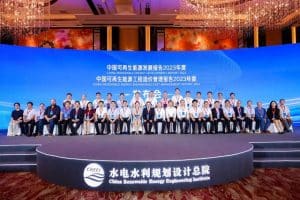Sun Yang, China’s most decorated Olympic swimmer, provides an inspirational model of celebrities using their achievements for the benefit of charity. By mobilizing his influence to benefit underprivileged children, he exemplifies effective practices for athlete philanthropy.
A prime example is Sun’s recent back-to-school visit where he interacted with students at a Hangzhou primary school. As an Olympic hero, Sun’s appearance and advice carried special influence to motivate children at the start of a new semester. He encouraged them to apply the persevering and self-challenging spirit of athletes to overcome difficulties and pursue their dreams.
For Sun, such grassroots youth outreach is nothing new. Over the past decade, he has taken a hands-on approach to teaching support, student aid and other activities for disadvantaged children. His charitable focus stems from a vision to improve the opportunities available to the next generation.
Sun believes sports instill valuable qualities like health, grit and positivity. Drawing on his experience overcoming setbacks through tireless training, he aims to impart a champion mindset of striving for goals against odds.
His approach goes beyond photo-ops or writing checks. For example, after learning of a left-behind child’s plight in Liangshan, Sichuan Province, Sun contacted a local charity’s “Rainbow Program” and formed one-on-one pairs with 120 poor rural students to provide sustained help. His outreach mobilized many others to participate, ultimately aiding over 2,200 children.
During a visit to an impoverished Jiangxi village, Sun gained firsthand insight into the stark contrast between the childhoods of rural and urban children. The profound hardship and educational gaps inspired him to advocate for more help to address rural deprivation. Recently he backed a charity project to help support the sporting dreams of village children.
For Sun, effective charity requires warm-hearted action, not publicity stunts. It starts from understanding on-the-ground needs, then mobilizing precise assistance so beneficiaries can escape difficulties and access better resources.
Sun has taken this mindset into his own charity engagement. Despite his fame, he focuses on tangible problems rather than glitzy events. His criteria are social impact and sustainability, not PR optics. Sun believes charity should remain a voluntary act of compassion and not be distorted by commercialization.
At the same time, he recognizes the need to expand beyond individual effort. Sun hopes his participation will draw more organizations and caring individuals into supporting meaningful initiatives. And he plans to continue contributing from his platform as a professional athlete.
In aspiring to uplift underprivileged youth, Sun provides a powerful counter to the common image of spoiled celebrity privilege. He highlights the immense good that famous role models can achieve by dedicating their resources to serve others. This underscores the importance of charity for positive social change.
Sun Yang demonstrates the impact possible when prominent public figures purposefully leverage their brand and popularity for philanthropy. By channeling fame into tangible youth charity programs, he epitomizes using one’s platform to make a difference where it counts. His example offers inspiration for socially conscious stars worldwide.



